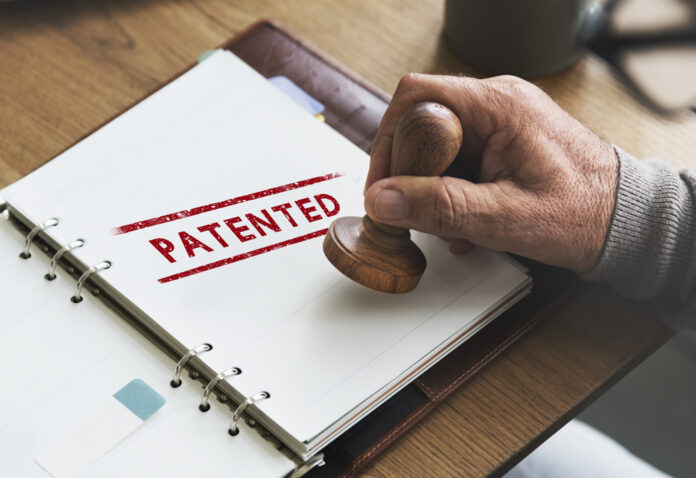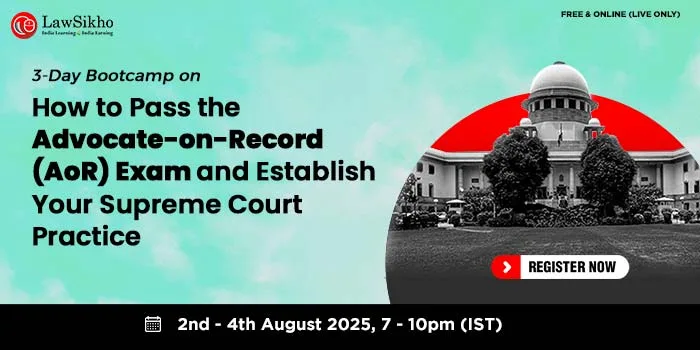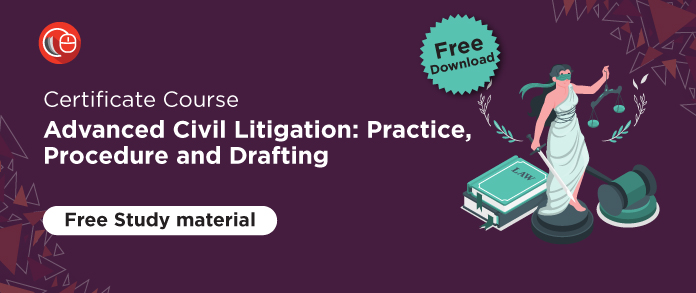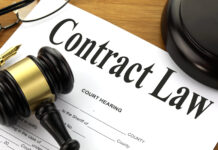This article has been written by Kishita Gupta, an advocate who is a graduate of the Unitedworld School of Law, Karnavati University in Gandhinagar. In this article, the author has tried to discuss various aspects that revolve around the patent office action. The steps, their benefits, and how to respond to a patent office action are also discussed in detail.
It has been published by Rachit Garg.
Introduction
Are you someone who is looking forward to filing a patent in the USA? Then this article is perfect for you. In the US, when a patent application is filed, the United States Patent and Trademark Office (hereinafter referred to as the USPTO) is responsible for examining it. If the USPTO finds any objections or rejections during their examination, they issue a First Examination Report (Patent Office Action) to the applicant. This is the stage of filing a patent where your invention is ready, your patent has been filed, and everything is going perfectly, but just at that moment, the patent office action kicks in. Understanding the Patent Office Action and how to reply to it is essential for filing a successful patent application.
In this blog article, the author will be discussing what a Patent Office Action is, how to submit a Patent Office Action, the benefits of submitting a Patent Office Action, how to reply to a Patent Office Action, best practices for replying to a Patent Office Action, the USPTO examination process, tips for responding to a Patent Office Action, examples of successful Patent Office Action responses, and reexamination proceedings.
What is Patent Office Action and what is its purpose
A First Examination Report (Patent Office Action) is a document issued by the USPTO to applicants when their patent application faces a notice of objection raised during the examination process. After the filing date of the utility non-provisional patent application, the waiting period is usually one year or longer. After the waiting period ends, one finally gets a letter from the patent examiner assigned to your application called an “Office Action.” The first patent office action typically takes between 15 and 18 months to complete. Rarely, a utility patent application may escape the initial office action and be granted a “first action allowance,” which is an allowance. The purpose of the Patent Office Action is to notify the applicant of the USPTO’s decision and to allow the applicant to submit a response. Patent Office Action also provides applicants with a detailed explanation of the reasons for the rejection or objection.
The USPTO has a set of rules and regulations for patent applications. These rules and regulations are known as the Manual of Patent Examining Procedure (MPEP). According to MPEP 2103, once the USPTO issues a Patent Office Action, the applicant has three months to reply, or their application will be abandoned.
Meaning of Office Action
A patent examiner will summarize their examination of your patent application in a document called an “Office Action.” The Office Action will specifically decide whether your patent claims are admissible. The initial Office Action in a utility patent application will almost always include claim rejections.
The examiner may issue a restriction requirement dividing your claims into groups and asking you to choose one set of claims above others for inclusion in the pending application in certain circumstances where they believe your claims include several inventions. The restriction requirement will normally be followed by a non-final office action. If a patent examiner believes that a patent application’s pending claims are directed to more than one invention, the examiner may issue a restriction requirement requesting the applicant to select a specific set of claims to pursue in the active application. A restriction requirement does not always imply that your application is flawed or that the claims are being denied. Simply put, it indicates that the examiner is not interested in reviewing every allegation that was initially presented.
Non-final office action meaning
Most, if not all, of your pending claims, are likely to be rejected in your first non-final office action. The examiner will note each pending claim’s features (or “limitations”) and how they relate to the pertinent previous art references by identifying them and explaining how they do so.
One must react in the following manners:
- By arguing that specific claim restrictions or features are absent from the previous art mentioned; and/or
- By modifying claims to incorporate restrictions or features that are not mentioned or implied in the referenced previous art.
The Office Action Response’s obvious objective is to persuade the examiner to accept your claims using a combination of claim revisions and incisive arguments that sensitively demonstrate how specific claim recitals are missing from the identified prior art.
Final office action
The applicant’s response to a non-final office action must persuade the examiner; otherwise, the examiner will issue a final office action. A “Final Office Action” is generally genuinely final since a patent applicant frequently has the option to submit an additional answer, which would lead to an additional non-final Office Action.
As you can expect, there are a ton of applications for patent examiners to look over. As a result, examiners are given a set period of time to analyze each patent application. The examiner will not wish to spend any more time reading additional responses if a response to a non-final Office Action does not meet the requirements for allowing the application. The examiner is essentially notifying you that your limited time is up in a “final” office action, which is not truly final for the applicant.
Prior to submitting the written response, it would be advisable to have your patent attorney perform an examiner interview. During the interview, the examiner may offer insightful comments that one can use to inform their claim modifications, supporting arguments, and choice of response.
Steps to submitting a Patent Office Action
Submitting a Patent Office Action is a simple process.
- The USPTO first reviews the patent application, and if any objections are raised, a Patent Office Action is issued.
- The Patent Office Action should then be carefully read and analyzed to understand the reasons for the rejection or objection.
- The applicant can then submit a response to the Patent Office Action, either verbally or in writing.
The applicant should provide a clear and concise explanation of why they disagree with the USPTO’s decision and provide evidence to support their argument. The applicant should also provide any additional information they believe will support their case. The response should be submitted to the USPTO within the three-month period given.
Benefits of submitting a Patent Office Action
Submitting a Patent Office Action has several benefits. These are as follows:
- First, it gives the applicant an opportunity to explain their case and provide evidence to support it. This can help the USPTO understand the applicant’s position better and potentially reverse their decision.
- Second, it gives the applicant an opportunity to discuss the application with the USPTO. This can help the applicant understand the USPTO’s position better and make any necessary changes to the application.
- Third, it helps to reduce the amount of time and money spent on the patent application process. By submitting a Patent Office Action, the applicant can avoid lengthy and expensive court proceedings.
- Finally, it helps to ensure that the patent is granted in a timely manner. By submitting a Patent Office Action, the applicant can prevent unnecessary delays in the application process.
A negotiation is included in the patent process. Most attorneys submit an initial set of claims that are more extensive than the inventor requires. The first set of claims will almost always be rejected by the examiner, who will then engage with the inventor to reach a compromise. In the same way that one never submits a patent with the full set of claims, neither should they pay the sticker price for a car. One must bargain, and the tactic that started when the patent application was submitted is continued in the office action response.
How to reply to a Patent Office Action
If a patent office action is received, one should not take it personally. Their invention is being accepted exactly as claimed; the examiner is not rejecting it. A numbered list of words describing which elements of the invention asserted are theirs to claim is included at the end of each patent. The most valuable component of a patent is a claim. It is the area of the patent that violators have violated. The inventor owns exactly what is described.
Responding to a Patent Office Action requires careful consideration. The applicant should review the Patent Office Action and make sure to address all of the points raised. The applicant should also provide evidence to support their argument and be prepared to discuss the application with the USPTO. The applicant should also make sure to submit their response within the three-month period given. If the applicant fails to respond in time, the application will be abandoned.
Every design patent, utility patent, and other piece of the intellectual property provided in the government’s name must be worthy of an issued patent, according to the United States Patent Office. Start early, understand what makes your patent novel, file the patent with the references you uncover, and collaborate with the examiner to obtain the claims you require that the patent office may accept in order to obtain the rights that every inventor must work for.
Best practices for replying to a Patent Office Action
When replying to a Patent Office Action, it is important to follow best practices. The applicant should make sure to carefully read and analyze the Patent Office Action to understand the USPTO’s position. The applicant should also provide evidence to support their argument and be prepared to discuss the application with the USPTO.
The applicant should also make sure to keep their response concise and to the point. It is important to avoid using legal jargon and to provide a clear and understandable explanation of why they disagree with the USPTO’s decision.
Finally, it is important to submit the response within the three-month period given. If the applicant fails to respond in time, the application will be abandoned.
The USPTO may send several varieties of official letters based on the application of the patent. Following is information on types of official letters and a description of how one should react to them:
Types of official letters
Office action
This letter informs the candidate of problems with the application. The letter should explain why the application was denied, if it had been. Alternatively, the letter could point out weaknesses in the application and specify what has to be done to fix the problem. The typical response period is six months from the date of issuance. If the deadline passes without being met, the application is abandoned, there is no registration, and the application fee is lost.
Amendment by examiner
If an applicant or his or her properly authorized representative updates an application by phone or email, this is a follow-up letter. An examiner will send a letter of amendment to confirm the information. Unless there is opposition to the move, there is no need for a response.
Priority action
This has a little more weight than an office action. It is sent following a direct consultation between an examiner and an applicant regarding application-related issues. Similar to the Office Action letter, it could provide an explanation for a registration denial or a list of actions to take to address problems. Priority Action Letters require a response within six months of the letter’s issue.
Suspension Letter
Several factors may cause examiners to suspend action on an application. There is no need for an applicant response, but you can monitor the situation and ask to have the suspension lifted if the difficulties are remedied as documented. This will be sent by the USPTO as part of a routine review to evaluate where things stand after the initial Suspension Letter (often at the six-month point). Once again, the applicant must respond within six months.
Notices
A Notice of Allowability will be mailed if the patent examiner decides that all of the active claims in the patent application are admissible. Before issuing the patent application as a U.S. patent, a Notice of Allowability will specify the allowed claims and be accompanied by a Notice of Allowance and Fees Due listing the fees that must be timely paid.
The examiner may send out a different kind of notification to point out one or more errors in the patent application or the applicant’s correspondence. Unless it comes along with an Office action, the notice typically gives individuals two months to fix what’s wrong.
The USPTO examination process (MPEP 2103)
The USPTO examination process is governed by the Manual of Patent Examiners (MPEP). According to MPEP 2103, the USPTO will issue a Patent Office Action if any objections or rejections are raised during the examination process.
Once the Patent Office Action is issued, the applicant has a maximum of three months to respond. If the applicant fails to respond in time, the application will be abandoned. The applicant should make sure to provide a clear and concise explanation of why they disagree with the USPTO’s decision and provide evidence to support their argument.
Following is the detailed procedure followed by USPTO personnel when examining a patent application:
Determination of the invention that is to be patented
Even if one or more claims are found to be deficient with respect to a particular statutory requirement, a USPTO employee will still review each claim for compliance with all statutory requirements for patentability during the initial review of the application. This is in accordance with the principles of compact prosecution.
Therefore, USPTO examiners must provide all justifications and premises for rejecting claims in the first office action. When possible, USPTO employees should explain how to overcome rejections and how to fix these issues. Failure to use this method could result in needless delays in the application’s processing.
The USPTO must adopt the following strategy in order to comprehend what the applicant has created and is looking to patent:
- Firstly, to recognize and comprehend any utility or claimed practical application for the invention.
- Secondly, the assessment of the specific embodiments and detailed disclosure of the invention to recognize what the applicant has invented.
- Lastly, to examine the claims
Conducting proper research on the prior art
Personnel at the USPTO are expected to thoroughly search the prior art before evaluating the claimed invention under 35 U.S.C. 101. A thorough search typically includes looking through both international and domestic patents as well as non-patent literature. MPEP §§ 904 must be referred to, to understand the procedure for conducting thorough research.
According to 35 U.S.C. 112(f) and MPEP 2181 through MPEP 2186, a search must consider any structure or material stated in the specification and its equivalents that correspond to the claimed means or step plus function limitation.
Determination of the invention’s compliance with US Codes
35 U.S.C. 101
According to one interpretation, 35 U.S.C. 101 imposes four requirements:
- An innovation may only be granted one patent;
- In applications submitted on or after September 16, 2012, the inventor(s) must be mentioned or, in earlier applications, must be the applicant;
- The asserted innovation must be patentable;
- The claimed innovation needs to be beneficial.
A subject matter is not patentable if it is not a practical application of an idea, a natural rule, or a physical reality. An innovative and useful structure made with the aid of scientific truth knowledge may be patented, but a scientific truth or the mathematical expression of it is not.
The courts have also ruled that an abstract notion, natural law, or physical phenomenon cannot be claimed to be the subject of a claim, meaning that one cannot patent every “substantial practical application” of such an idea, law, or occurrence. This is due to the fact that such a patent would, in actuality, be a patent on the physical phenomenon, law of nature, or abstract idea itself.
Examiners should avoid focusing on issues of patent eligibility under 35 U.S.C. 101 to the detriment of considering an application for compliance with the requirements of 35 U.S.C. 112, 102, and 103 and should avoid treating an application solely on the basis of patent eligibility under 35 U.S.C. 101 except in the most extreme cases.
35 U.S.C. 112
The following two actions must be taken in order to assess an application’s conformity with 35 U.S.C. 112:
- Evaluate in order to determine if the claimed invention complies with the following two unique and separate requirements:
- The claim must describe the subject matter that the applicants consider to be their invention, and
- That the innovation is specifically mentioned and clearly asserted in the claim(s).
- Assess in order to determine if the claimed invention complies with the following three requirements:
- adequate written description,
- enablement, and
- best mode.
35 U.S.C. 102 and 103
Comparing the claimed subject matter to what is known in the prior art is the first step in examining a claimed invention for compliance with 35 U.S.C. 102 and 103. The claimed invention will be denied by USPTO staff in accordance with 35 U.S.C. 102 if there are no differences between it and the prior art.
Once differences between the claimed invention and the prior art have been recognized, such differences must be evaluated and resolved in light of the information that would be known to someone with ordinary competence in the field. In light of this, it is important to assess whether the innovation was obvious at the time it was created. Otherwise, the alleged invention complies with 35 U.S.C. 103.
Clear communication of findings
After completing the aforementioned analyses of the claimed invention under all applicable laws, including 35 U.S.C. 101, 112, 102, and 103, USPTO personnel should review all proposed rejections and their justifications to ensure that they can establish a prima facie case of unpatentability. Any denial should then only be made official by an office action. The facts, conclusions, and justifications supporting them should be communicated in detail in the office action.
Reexamination proceedings
If the applicant is unsatisfied with the USPTO’s decision, they may request a reexamination. During the reexamination, the USPTO will review the Patent Office Action and the applicant’s response and may either reverse its decision or uphold its original decision.
If the USPTO upholds its decision, the applicant may appeal the decision in court. The applicant should make sure to provide evidence to support their argument, as well as a clear explanation of why they disagree with the USPTO’s decision.
Any person at any time may submit a request for the Office to reexamine any patent claim on the basis of any prior art that has been cited in accordance with Section 301. The request must be submitted in writing and include payment of the reexamination charge, which the Director established in accordance with Section 41. The request must specify each claim for which reexamination is requested, as well as the relevance and method of applying the stated previous art. The director will promptly transmit a copy of the request to the patent’s owner of record, unless the individual making the request is the owner of the patent.
The patent holder, the Director of the USPTO, or other (third) parties may ask for an ex parte reexamination. A “third-party requester” is someone who submits a request for the patent to be reexamined on behalf of the patent owner. Be aware that only the patent owner and the examiner are involved once reexamination proceedings start. As a result, a third party should only ask for an ex parte reexamination if he has relevant prior art that will unquestionably render the claims invalid.
There were three projected benefits from ex parte reexamination processes.
- First off, it is anticipated that a reexamination proceeding would resolve validity problems more swiftly and affordably than the time-consuming litigation typically engaged in such matters.
- Second, it is anticipated that a reexamination proceeding would enable judges to refer concerns about patent validity to the Patent Office’s knowledge.
- Third, by giving the USPTO more opportunities to examine contested patents, a reexamination proceeding was anticipated to increase investor confidence in the certainty of patent rights.
Judicial review of the patent office action
The two main types of judicial review of Patent Office actions are statutory review of judgments that deny patent or trademark applications and non-statutory review of decisions that do not involve the denial or award of a patent or trademark. The statutory provisions created in the previous section only address the refusal or issuance of a patent or trademark. Below, certain statutory provisions are examined.
Statutory review of the patent office action
Only applicants who have been definitively denied a patent [or trademark] due to a Patent Office decision against them are eligible for statutory review of a Patent Office action. As this is an administrative remedy that must be used up before judicial review is allowed, the judicial review is postponed until the applicant has gotten a decision from the Board of Appeals within the Patent Office, as observed in the case of Sanford v. Kepner (1952).
Other types of review are not permitted since the review remedy provided by the statutory provisions in the denial of patent and trademark applications is sufficient. There is no reconsideration under these regulations if a decision that effectively rejects or accepts a patent or trademark application has not been made. In certain circumstances, a review must be requested by a writ of mandamus or under the Administrative Procedure Act.
An applicant who disagrees with the Board of Appeals’ ruling may file an appeal with the US Court of Customs and Patent Appeals, forfeiting his ability to advance in accordance with Section 145 of this title. A party to an interference who is unhappy with the Board of Patent Interferences’ decision regarding priority may file an appeal with the United States Court of Customs and Patent Appeals, but this appeal will be rejected if the opposing party notifies the Commissioner that he prefers to conduct all further proceedings. This is mentioned under 35 U.S.C. Section 141– 144.
Non-statutory review of the patent office action
Outside of the review provisions of the patent and trademark legislation, there is a very limited review of Patent Office activity. Every final agency action for which there is no other sufficient remedy in court is subject to judicial review under the Administrative Procedure Act. The legislative review mechanisms outlined above provide an adequate remedy to prevent review under the Administrative Procedure Act, as the majority of final Patent Office acts sought to be reviewed are limited to the question of the denial or award of a patent or trademark. The availability of review under the patent and trademark statutes prevents the resort to review by mandamus in certain circumstances.
The patent and trademark statutes do not allow for judicial review of non-final denials of patents and trademarks. The Administrative Procedure Act does not apply because the Patent Office’s decision is not final. Because the administrative remedies have not yet been exhausted, review by writ of mandamus cannot be granted. The review that is available outside of the statutory framework for patent and trademark reviews is generally restricted to the review of Patent Office actions that do not involve the final grant or rejection of patents or trademarks. The Administrative Procedure Act is relevant if there is no alternative competent remedy in a court and the Patent Office action negatively affects or aggravates the person seeking review. It is insufficient to demonstrate an intent to exempt particular activities from review simply because they are covered by a statutory review mechanism, as noted in Abbott Laborateries v. Gardner (1967).
The first objection to barring judicial review under the Act is not present because the patent and trademark acts do not contain any provisions that forbid judicial review. Depending on the nature of the specific action, the Patent Office may or may not leave some decisions up to discretion. According to Sikora v. Brenner (1967), there is jurisdiction to decide whether the rejection to enter an amendment to a patent application following the filing of an appeal to the Board of Appeals was capricious or an abuse of discretion. If there was an abuse of discretion, however, even in cases where the particular action is discretionary, judicial redress may be sought. Mandamus lawsuits may also be filed as an alternative in these circumstances.
In the case of Commissariat A. L’Energie Atomique v. Watson (1960), the decision to revive the abandoned application was up for review in accordance with 35 U.S.C. 133. According to the Court of Customs and Patent Appeals, mandamus petitions filed in district courts should be utilized to request reconsideration of discretionary actions and matters not subject to the Board of Appeals ruling.
In a recent ruling of U.S. Patent and Trademark Office v. Booking.com B.V. (2020), Booking.com had used the domain name BOOKING.COM since at least 2006 and ran a website where users can book travel and accommodations. Booking.com submitted four trademark applications to the U.S. Patent and Trademark Office (USPTO) in 2011 and 2012 for the use of BOOKING.COM as a word mark and for stylized variations of the mark.
Generic phrases are not “distinctive” as required by the Lanham Act for a mark to qualify for protection. The applications were denied by the USPTO because the examiner determined that the marks were unprotectable because BOOKING.COM was too generic to be used in connection with the services for which BOOKING.COM sought registration (online hotel reservation services, among others).
BOOKING.COM filed an appeal with the Trademark Trial and Appeal Board, which upheld the denial of its requests. The Board determined that BOOKING.COM did not qualify for trademark protection since it was a generic phrase for these kinds of services. The Board reasoned that consumers would understand the term “BOOKING.COM” to refer to an online travel reservation service—exactly the services offered in BOOKING.COM’s applications—since “booking” is a general term for “a reservation or arrangement to buy a travel ticket or stay in a hotel room” and “.com” denotes a commercial website. In this decision, the District Court declared that Booking.com had taken on a secondary meaning. The Fourth Circuit panel of the United States Court of Appeals overturned the district court’s decision.
Conclusion
In conclusion, understanding and responding to a Patent Office action is essential for filing a successful patent application. Submitting a Patent Office Action gives the applicant an opportunity to explain their case and provide evidence to support it. In simple words, we can conclude that a patent office action is equal to getting a thesis approved by a professor, there will be ifs and buts, but ultimately, with the negotiations with the examiners, the best invention wins. The applicant should make sure to carefully read and analyze the Patent Office action, provide evidence to support their arguments, and submit their response within the three-month period given. If the applicant is unsatisfied with the USPTO’s decision, they may request a reexamination. Understanding and responding to a Patent Office action can be a daunting task, but with careful consideration and best practices, it is possible to submit a successful response.
Frequently Asked Question (FAQs)
What is the deadline for a response to patent office action?
Normally, a response to an office action must be received within three months of the date the action was issued in order to be deemed “timely.” For a price, an optional three-month extension can be asked for.
Who should be contacted if one has any doubts about a patent office action?
The USPTO staff might be able to respond to every inquiries regarding a patent office action. However, they are unable to offer them legal counsel regarding how to react to it. These staff members include the examining attorney, his supervisor, and the Trademark Assisting Center (TAC).
What is the prime purpose of a patent office?
The USPTO’s responsibilities include trademark registration and the granting of patents to protect inventions. Regarding their discoveries, company products, and service identifications, it supports the interests of businesses and inventors.
The public can get information and assistance with patents via the Inventors Assistance Center (IAC). Former supervisory patent examiners and main examiners who are on staff at the IAC can answer your questions and assist you in submitting a patent application quickly and easily.
How do the registered users of the USPTO’s EFS-Web system submit their response to the patent office action?
A response can be electronically sent through the USPTO’s EFS-Web system by logged-in individuals at their website. All correspondence submitted through EFS-Web is time/date stamped as it arrives on the USPTO server in Eastern Time, and this receipt time governs whether a document is considered to be current. The filing date for any submission received by 11:59 p.m. Eastern Time will be applied regardless of the USPTO’s “normal” working hours.
What is the difference between a reexamination of a patent and a reissue of a patent?
When a patent is mistakenly found to be entirely or partially inoperative or invalid due to a defective specification or drawing, by reason of the patentee claiming more or less than he was legally entitled to under the terms of the patent, or for any other reason, the USPTO may regain jurisdiction over the patent and reissue it. A specification, priority claim, or drawing correction cannot be made by filing for reexamination.
While a reexamination can be started by the patent owner or a third party, a reissue process can only be started by the patent owner. A reexamination proceeding’s claims cannot have their scope expanded. If a reissue was filed within two years of the original patent’s grant date, the claims included in the reissue may be expanded in scope. Any information that was omitted during the initial prosecution cannot be added in a reissue.
References
- https://www.uspto.gov/patents/maintain/responding-office-actions
- https://www.lexology.com/library/detail.aspx?g=fb9a1409-7002-43f5-a2a7-c90a7466c23d
- https://content.next.westlaw.com/practical-law/document/Ic48f2236fac311e79bf099c0ee06c731/USPTO-Patent-Office-Action-Response-Toolkit?viewType=FullText&transitionType=Default&contextData=(sc.Default)
Students of Lawsikho courses regularly produce writing assignments and work on practical exercises as a part of their coursework and develop themselves in real-life practical skills.
LawSikho has created a telegram group for exchanging legal knowledge, referrals, and various opportunities. You can click on this link and join:
Follow us on Instagram and subscribe to our YouTube channel for more amazing legal content.







